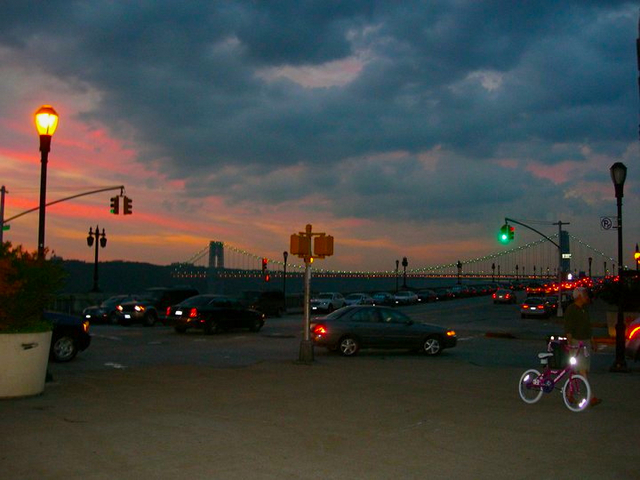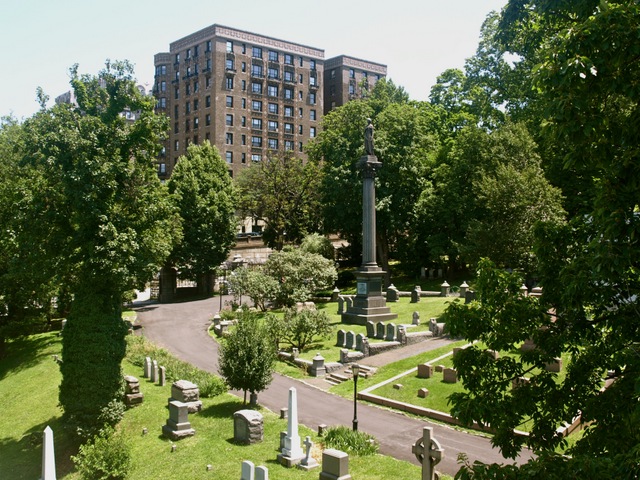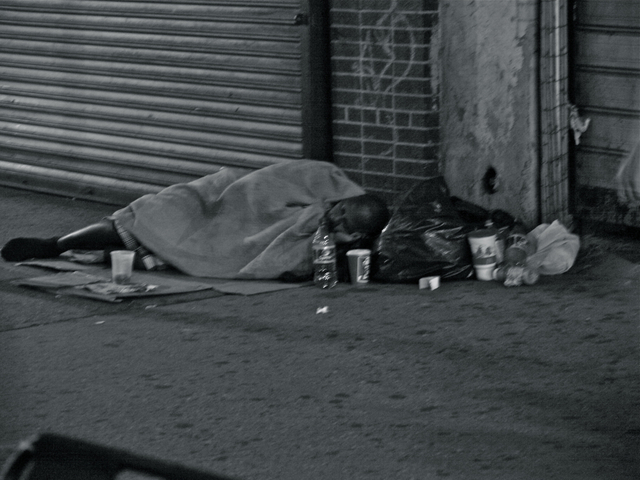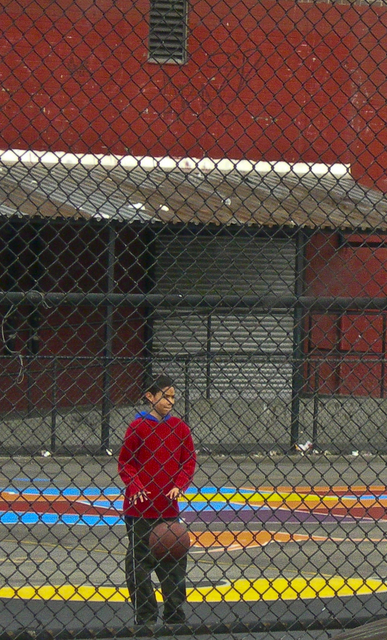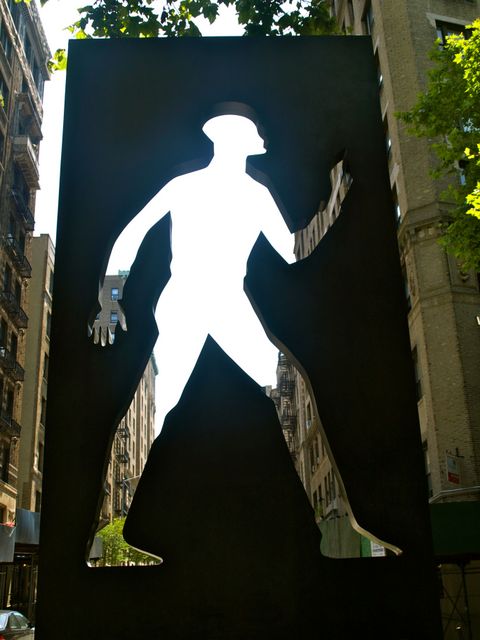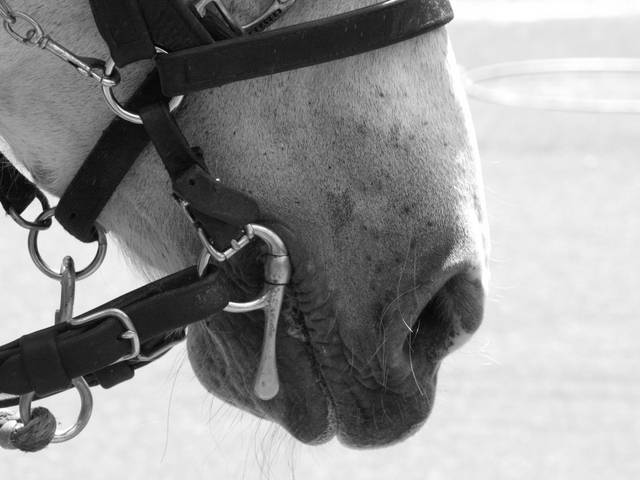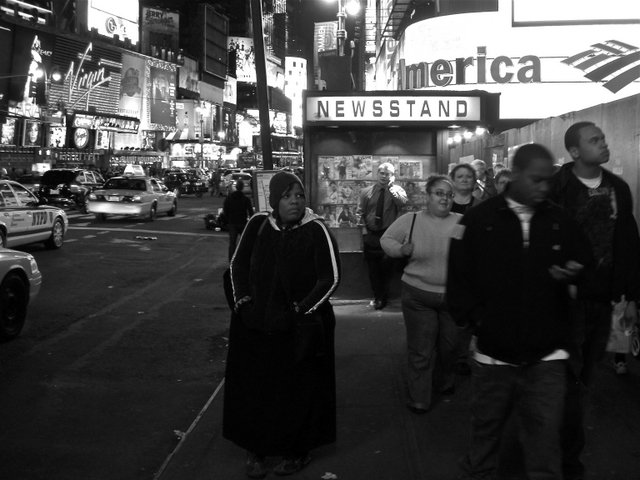
Pat Keane is an extraordinary raconteur, never better than when describing the twists and reversals of his life which, in the end, always have the air of myth. He is a man (wide-eyed Catholic schoolboy become eminent scholar) but he doth bestride the world like a hero when the stories start spilling out. I am calling this one a “fictional memoir,” a term inspired by Kenneth Rexroth’s Autobiographical Novel, which is patently his life story thinly (as in diaphanous) disguised as a fiction. A propos of this, in last weekend’s New York Times Book Review, in an essay titled “How to Write,” Colson Whitehead quotes Saul Bellow’s observation that “Fiction is the higher autobiography.” Whitehead’s paraphrase—“In other words, fiction is payback for those who have wronged you.”
“Leaving the Zoo” is an uproariously funny tale about a young man (Catholic schoolboy — see detail of 8th Grade class photo above, the author just behind the the priest, smiling) taking a summer job at the Bronx Zoo (think: early 1950s). The job is awful, except for the animals. The co-workers are malingerers and bullies. Ah, but the worm turns. And the wide-eyed, innocent, Catholic schoolboy turns out to have a streak of, well, near Satanic malevolence that is, yes, inspiring to behold.
To add to your delight the photographer Jake Rajs has generously given NC permission to use his famous photograph of the Rainey Memorial Gate, Bronx Zoo.
dg

1
The massive bronze Memorial Gate at the Pelham Parkway entrance….To us as kids growing up in the Bronx, in a grey world of concrete and tenements, it had always been a portal to paradise, to a lush oasis of trees and creatures great and small gathered from every continent. The bronze Gate itself seemed a living thing, with its sculpted animals and foliage coated in that lovely patina of green.
Now I walked through the Memorial Gate, then under an arched pennant reading: “THE BRONX ZOO: EXPERIENCE IT!” I passed those sleek clowns, the seals, playing to their audience, and, on the opposite side of the promenade, the unplayful: the caged lion, panther, leopard, and the two Bengal tigers. It was all familiar. But not my sudden turn into the Administration Building. For this time I wasn’t coming to the zoo as a visitor but as a fifteen-year-old hoping for a summer job. Ike was President, the Korean “police action” winding down, my initiation into adult life about to begin. Despite a few quizzical glances at the two books I’d just borrowed from the Pelham Bay Library (Milton’s Poems and Bradley’s Shakespearean Tragedy), I’d gotten the job, as my aunt had assured me I would.
The maples forming a natural colonnade were golden-budded the day the manager of the animal track, Bartells, had first interviewed me and told me to fill out and submit working papers. Those trees were in full leaf the evening he sidled up to me as the crew was returning from the track to the barn. Though he approached me from behind, I had heard his hacking smoker’s cough from a distance, and interpreted the sign of his invisible coming: the sound of that belt-slung ring of keys conferring on its bearer supreme authority, the power to lock and to loose. The jingling stopped.
“I want you to know,” he began, his narrowed eyes alerting me to the solemnity of the occasion, “that I’ve never moved anyone this young this fast from donkey-boy to camel-boy.” Naïve as I was, I was aware that my accelerated promotion had less to do with any merits of mine than with what my benefactor thought might be gained by currying favor with my aunt, mysteriously ensconced in the Zoo’s imposing Administration Building. As I’d quickly discovered, Bartells, like most tyrants, bootlicked those above him and bullied those beneath. His workers were treated like animals and the poor animals themselves like machines. The two exceptions were Castelli and, for a while—me!
Bartells stopped, awaiting my response. Unprepared, but not wanting to fall short, I tried to convey an appropriate blend of modesty and pride at this, my sudden elevation in the hierarchy of teen-aged toilers at the animal track.
Impressive as it was, the position of camel-boy did not occupy the pinnacle. That eminence was reserved for the llama-handler, Castelli, a nineteen-year-old troglodyte endowed with a defined torso that seemed carved from quebracho rather than composed of mere human flesh. He was the only one able to control the llama, a sinewy, snorting creature as muscular and mean-spirited as himself. The trick was to “break ’em,” which, according to Castelli, meant showing any animal, a person for that matter, who was in charge. “It’s the eyes,” he’d say; “they can see it in your eyes.” In any case, even after the llama had been “broken,” only the bravest children dared to mount the damned thing. And even they needed a nudge from mommies less leery of the sullen llama than intrigued by its handler’s knowing look and sculpted physique.
Except for weekends, when inconvenient fathers were present, Castelli’s performances were predictable. Flashing a set of strong white teeth of which any predator would be proud, he would tear in half the proffered ride-ticket, depositing the receipt-portion in the pocket of a strategically unbuttoned shirt, then hoist little Johnny or Jane into the saddle, allowing the riper mothers or older sisters an opportunity to follow the shift of tension from biceps to chiseled triceps. A glimpse of rippling abdominals enticed the more daring to drop their eyes to the blatant bulge at the brass-buttoned crux of his Levis.
Hardly spontaneous, but impressive. For me, however, the show was dismaying. Disregarding Sarah Vaughan’s musical plea not to put them “on a pedestal,” I tended to idealize women in the abstract, and so was always disappointed that so many actual, earth-treading women succumbed to these displays of machismo. My own sexual experience had not yet progressed beyond the “soul-kiss” and, in the darkness of the local movie, the tentative, leaden-armed ritual rewarded by a half-permitted caress of a ripening breast. Not having gone “all the way” myself, I wondered how many of Castelli’s overtures led to crescendo and climax.
Those conquests would have taken place off-track. We were on the animal track; and here, despite Bartell’s gold-banded and billed military-style headgear, we all knew who occupied the supreme position in the hierarchy. Bossier even than Bartells, Castelli constantly bullied the rest of us—even the youngest, a kid whose vision was so bad he couldn’t read the ride-tickets. Ever-considerate, Castelli had a suggestion: “Hey. Want we should print them in braille just for you, four eyes?”
His own eyesight was as keen as a circling hawk’s. For Castelli, the world, vulnerable and belly-up, was to be inspected and dominated. Under the guise of unsentimental efficiency, he handled the animals roughly and the rest of us as resources to be exploited. We were not only his gofers but his personal exchequer, our lunch money subject to random confiscation under the euphemism of borrowing. Daily, we were reminded of what Castelli referred to as “the pecking order around here,” one to which it “fuckin’ behooved us” to adjust.
Since it never dawned on us to gang up on him, we put up with his petty tyranny. Still, to be the youngest ever to attain the rank of camel-boy gave me a modest cachet. Having somehow gotten it into his head that my aunt had “pull,” Bartells had put me on the second rung to begin with, leapfrogging the usual starting position. Not for that “fine woman’s” nephew the ignominy of the jackass-cart—a wagon typically packed with the smaller or more timid children and pulled, slowly, by Toby, a venerable old creature inured to his unglamorous duty.
Orwell’s pigs were right. “Some animals” really were “more equal than others.” Bypassing Toby, I had been assigned a brace of sweet-natured Sicilian donkeys, Prince and Daisy, miniatures rigged out in blue and pink saddles and belled reins, cute as stuffed toys. Among all the track’s animals, even more than the llama and camels, they were the stars, the recipients of most of the daylong oohs and ahs, tributes to a velvet-eared cuddliness that made them seem escapees from a Disney family epic. And they were a delight to look at and stroke. Of course, for Castelli and Bartells, they were simply commodities, just two more hoof-mounted hay-burners to be fueled and profitably worked. But even the saturnine Bartells had to admit that they “drew customers.” Prince and Daisy were adored by the children—and loved by me.
I would certainly miss them on ascending the ladder to assume my new duties as camel-boy. It was a literal ascent since my promotion would take me from ground-level to the elevated platforms from which kids were carefully lifted into howdahs slung on both sides of the gently swaying humps of camels waiting between the loading docks to receive their cargo. But the separation from Prince and Daisy would have been even more painful had I not been shaken out of my adolescent ease by an incident just days before my promotion.
I’d come to the zoo early, shortly after 5 a.m. I’d been promised a rare gift by Jack, an experienced animal keeper who had befriended me when he noticed me lingering whenever I passed the building housing the Big Cats—now long since liberated to roam the veldts of the open-ranged modern zoo. Back then, our two Bengal tigers had, after several matings, finally gotten the job done. The tigress, Aleta, had lost her first-born cub—common, I was told by Jack, among tigresses in the wild as well as in captivity. But she’d then lost two more after a second mating. Even back then, before they were threatened with total extinction in the wild, tigers were as precious as they were beautiful. So there had been a relieved and enthusiastic response throughout the zoo when, earlier that spring, Aleta had finally produced a viable litter, two healthy cubs, born without incident. She brooded protectively over them, gazing indifferently through the slanted ellipses of amber eyes at those allowed a glimpse of the new arrivals.
When Aleta later suffered complications requiring surgery, her eight-week-old cubs, no longer blind but still small and dependent, had to be temporarily separated from their mother. While she recovered, the unweaned cubs were transferred to their own canvas-floored cage, with Jack playing the role of surrogate, feeding them Aleta’s milk from a nippled bottle. There’d been no thought of putting them together with their father, who spat and growled whenever his pacing brought him close to the adjoining cage housing his estranged family. With Aleta mending, a gauntleted Jack nursed, coaxed, and comforted the abandoned cubs. Eventually, they relaxed when he was with them, and even became affectionate.
I took to spending the few minutes I could spare from my supposed “lunch hour” watching the cubs cavort with Jack. One day he motioned me over.
“Be here tomorrow by dawn,” he whispered. “I’ll let you in with them for a minute.”
After a night of sleepless anticipation, I rose, dressed, and caught an almost empty bus, arriving at the zoo in that eerie half-hour of darkness when the birds begin to tentatively herald a dawn not yet visible. Having passed me the gauntlets, Jack led me into the cage. At first, the cubs hissed and spat, then, after eyeing me warily, seemed reassured by the familiar figure benignly looking on. For a while we were all motionless. Then it happened, and so suddenly that even Jack was caught off guard. First one cub, then the other, sprang from the canvas floor like playful kittens, catapulting straight up and gripping my shoulders with taloned paws. When they licked my face, the hairs on my neck stood up. The feel of their rough tongues and the slight pain produced by the grip of their mini-claws only added to the thrill.
I wanted time to stop. But the light was already coming up and there was the animal track to attend to. In a state of euphoria I made my way to the barn. The trees were ricocheting birdsong now and some of the other animals were beginning to stir. I arrived as Bartells, having unlocked the gate and opened up the barn, was in the midst of his own morning ritual: a guttural coughing and throat-clearing that went on until he finally hawked up a ball of greenish phlegm. Undeterred, still bathed in the afterglow of my encounter with the tiger cubs, I picked up a brush and strolled to the paddock enclosing my Sicilian charmers.
What? My jaw dropped as I stared at Prince. Having just dismounted Daisy, he was sporting a vivid, stiffened penis. A city boy still ignorant of the facts of the barnyard, I was stunned. The jarring image of this little Disneyesque creature with a boner stretching almost to the ground would for some time trouble my dreams. But I was even more taken aback by the shocking complicity of Daisy, who, unperturbed, peered up at me with those luminous, great-lashed eyes as demurely as ever. I expected this kind of behavior from the Castellis of the world and those he attracted. But Prince? And Daisy!
Even the cubs’ breeding, the abstract “mating” that produced them, now lurched palpably into my imagination. And there, his member gradually retracting but still formidable, “stood” Prince, nuzzling his consort. Something all too real had been rudely thrust into the untroubled waters of my idyllic notion of their bond. Even when the first ripples from the impact had receded, the placid surface remained shattered. Here was a visceral, if unintended, example of what that entrance-pennant had promised as the Zoo “Experience.”
My own hurtling from Innocence to Experience demanded an immediate renegotiation of the terms of my relationship with Prince and Daisy, whom I could no longer regard as my little pets and pupils. The ancestral voices were almost audible: Like the animal-masked paleolithic hunters before me, surrounded by beasts, I had to recognize and acknowledge that the animals were my teachers. But that reorientation, like the lessening of the original shock, would take time. And so it was with real ambivalence—not the mix of self-effacement and pride I feigned—that I accepted my premature but welcome promotion to Camel Boy.
At first, all went well. To my surprise, even slight embarrassment, I took pleasure in my new status. I was less surprised by my relief in rising above the now problematic muck and dung of the animal track. I enjoyed being up high on the loading platform, breathing the buoyant blue air, strapping in the eager children, gazing into the curiously affecting eye of the camel, its unexpectedly soft, feminine lashes reminding me of the bashful Daisy I had thought I knew.
More practically, my weekly salary soared, no small thing since I was facing several years of trying to save up in order to pay my own way through college, still possible back in what the Lone Ranger’s radio announcer used to evoke at the start of every program as “those days of yesteryear.” My raise took me from $17.50 a week to $25. Even after taxes, I could look forward to the rest of July and a whole August that would net enough to pay for my two final years in high school and for the Mickey Mantle baseball glove I craved. Between hoisting kids into swaying howdahs, I tried to figure out how I could at least start to accumulate the thousand dollars I’d need to day-hop at Fordham.
It was in the course of calculating just how much I’d need over the next few years that my troubles began, troubles that would culminate in my leaving the Zoo.
.
2
It was the track’s—or, at least, Bartells’—policy that, in turn, each of us, except for the privileged Castelli, would “volunteer” to give up half his lunch period to direct traffic to the ticket-booth and then back across the paved path to the mazed entrance that led to the actual track. Not long after attaining the prestigious rank of camel-boy, I ventured a suggestion regarding this unnecessarily confused setup. But by then, Bartells, having realized that my aunt was just another employee, regarded me as he did everyone else under him, except for Castelli.
In fact, I was even more contemptible than the others in Bartell’s eyes since, given even a spare minute, I always “had my head stuck in some goddamn book.” Coming from such a “smart-ass,” my tentative suggestion that the booth and the track entrance should, perhaps, be re-located so that they would be together, was rejected, literally spat upon with a hawked-up glob of mucus befitting such unsolicited theorizing. Booth and track had been separate from time immemorial; that was “good enough for” Bartells. Apparently it was beyond the pale even to question so traditional an arrangement, however half-assed it might have been.
“Where do we buy the tickets?” It was the question endlessly, and understandably, posed by perplexed or irritated parents as their children—usually seduced by the winsome Prince or that siren, Daisy—tugged excitedly at dresses and sleeves. And we would direct them through the labyrinth. I played my part in this lunchtime ritual for several weeks, until it occurred to me—an inspiration whose dishonesty seemed somehow mitigated by its daring—that my incipient college fund could really get jump-started if I were merely to pretend to rip up the ride-tickets given me by customers, transferring them whole rather than halved into the dark recesses of my jeans pockets. I might then have a rather different response to the familiar query, “Where…?” Once I’d implemented my scheme, initial guilt and nervousness yielded to a certain pride in my aplomb.
“Where do we buy the tickets?”
“Why,” I’d respond—making sure Bartells wasn’t looking, and then producing the required number of tickets from my pocket—-“right here!”
And so it went for almost a month, during which my salary—and thus my future college fund—catapulted cub-like from $25 to over $75 a week. The busy track pulled in so much money that I conned myself into feeling no guilt about my extra “earnings.” Like everyone else my age, I’d read Animal Farm and had come to see Prince, Daisy, and especially the uncompromised Toby, as a composite Boxer the Horse to Bartells’ and Castelli’s tyrannical Napoleon the Pig. Now, I selectively applied Orwell’s fable to the lowliest human toilers at the track.
After all, I rationalized, were not we underpaid and overworked proletarians being deprived of half our lunch-period by the System, in this case a combination of engineering stupidity and capitalist exploitation of the laboring class? Surely these considerations justified some recompense? If not, I could always find support in the closer-to-home side of the Cold War debate, free enterprise. My additional income represented just compensation for my initiative in undertaking a risky venture.
What followed were the glory days—entrepreneurial enterprise rewarded, and kept exciting by the little rushes stimulated by flirting daily with danger: the ever-present prospect of getting caught by Bartells, whose beer-swollen figure and weathered face I monitored, hawk-like, from my vantage-point between ticket-window and track, while making sure that I myself was partially obscured by the milling crowds. My timing during these tensely busy half-hours became flawless, my impersonation of ticket-dispenser convincing even to me.
It was a different and lesser exhilaration than my privileged moment with the tiger cubs, but I felt—as camel-boy and con-man—at the top of my game. Only later would I realize that from this, the zenith of my zoological trajectory, there was no direction to go but down.
Though, increasingly, I took risks proportionate to my growing confidence, I never traded tickets for cash when Bartells was out of my line of sight. I had not, however, calculated on Castelli, assuming that his llama-management and muscle-flaunting displays were all-consuming. But it turned out that, along with a torso, the llama-boy came equipped with a brain, however reptilian.
One day I detected an altered look in his eye, a certain alerted cunning that complicated without at all replacing the usual self-satisfied arrogance. One of our crew had become ill, and I had volunteered to sacrifice the whole of my lunch hour to shoulder the ordinarily tedious burden of traffic direction. But my generous gesture had come a tad too quickly, a telegraph-signal to a street-smart hustler like Castelli. Never one to “pitch in” himself, he became suspicious. Two days later the game was up. The beginning of the end came, deceptively enough, in the most pleasant guise.
The Scene: A lovely young woman with little brother in tow drops the half-dollar change I have just given her with her ticket. As she bends over and I admire the cascading of her long hair and the shifting of her breasts, I instinctively cast a wary eye in Castelli’s direction. The crowd has parted at just the wrong moment and, sure enough, I catch Castelli’s snake eyes fixed on the scene—on the young beauty’s cleavage, to be sure, but then, knowingly, riveted on the retrieval of the tell-tale coin. In the dimmest of recesses, light had dawned.
The denouement came at dusk. Having unsaddled the animals, watered them, and forked down their evening hay and oats from the suffocatingly hot loft, we washed up. After checking that all doors and paddocks were secured, either locked or bolted, Bartells gruffly herded us out and shackled up the barn and gate for the night. We scattered. I headed, at top speed, for the bus at the Southern Boulevard exit. I’d gotten maybe two hundred yards when I heard the inevitable.
“Not so fast.”
There was no need to turn; I knew who it was. Though I could feel my heart sinking, I seemed compelled to adopt a cavalier tone.
“Ah, Castelli. And what can I do for you?”
He spun me around. “What can you do for me?”
“My very question.”
“What you can do for me, you little piss-ant, is give me half.”
“Of what?”
“Half of you know fuckin’-A-well what!”
With tempers rising, I saw no point in continuing this Q&A. I contemplated a range of options, from an indignant profession of innocence to acknowledgement of my “operation” and a jovially collegial acceptance of the proposal on the table. But in the end my response was the pure product of instinct, planted in the genes and nurtured by life growing up in the South Bronx.
“Up yours, Castell—“
As I was forming the final vowel, I found myself shoved off the path into the underbrush fledging a slope bristling with wildflowers. Once we were pastorally relocated, it took just two hammer-fisted punches to the gut to reveal to me the inadequacy of my intuitive response. A second attempt yielded the correct answer to the suggestion that we share and share alike.
And so it went for the next two weeks, with Castelli taking half of my “supplemental” income, while I took all the risk. I’d adjusted to this altered and asymmetrical state of affairs when, dragging myself to the bus after a particularly trying day, I was tapped on the shoulder from behind.
This time Castelli was accompanied by an acolyte, a “buddy” who worked with a long-handled broom sweeping up cigarette-butts and crumpled cups, melted ice-cream from dropped cones and half-devoured hot-dogs, along with other detritus littering areas around the zoo’s concession stands. Gesturing toward this worthy, Castelli mustered up his now-favorite word:
“Half. He gets half, too.”
Though the arithmetic seemed to have escaped both my interlocutor and his equally quick-witted friend, I had no difficulty computing that two halves came to a whole, leaving nothing for me. But, as if determined to prove that, in practical matters, I retained the impeccable credentials of a slow learner, I again went with impulse, suggesting that the two pals might consider devoting some serious thought, if they had any to spare, to the prospect of taking a nice flying fuck for themselves.
This time, the hint that yet another incorrect response had been given took the form of Castelli’s engineer-booted foot crashing into my knee. As my leg buckled under me and I howled in pain, Castelli assisted me on the way down with a short but effective left-cross that chipped a front tooth in my open mouth. One lip was already ballooning by the time they swaggered off, with Castelli leading the way and laughing. I’d had enough.
.
3
I had had enough. I did not cut Castelli’s friend in; in fact, after a “sick day” during which I applied ice-packs to my knee and lip, and serious thought to my dilemma, I decided to bring my scam to a screechy-ass halt altogether. Using my bad knee as an excuse, I got Bartells to take me off traffic duty. Let the bastards divide 100% of nothing. While I was actually relieved to bring my criminal career to a close, Castelli was another matter. His glowering and muscle flexing whenever he was in my general vicinity confirmed that the issue had not been resolved to his satisfaction.
During my now leisurely lunch-periods, when I wasn’t reading or checking in on the tiger cubs, I began to examine, for the first time, the details of various animals, from elephants and rhinos down to every noble insect that favored me with a visit. One day, Castelli intruded even on my entomological pursuits. Deftly dodging the vicious swat aimed at it, a bee with a tuft of the sun on its back managed to avoid eclipse by the powers of darkness. Less lucky, the dragon-fly whose delicate prehistoric double-wing structure Castelli caught me admiring ended up under a familiar and precisely-targeted boot. It wasn’t a matter of if, but when, he’d get to me.
In the meantime, aside from his lunchtime forays into insect-squashing and knocking the odd book out of my hands, Castelli was biding his time, just letting me sweat a bit. About a week and a half after I’d been punched in the mouth and treated to a cartilege-crunching kick in the knee, the gathering shit-storm exploded—but in a way neither of us could have anticipated.
Just before we headed out to the track that morning, Bartells asked Castelli (he never ordered the llama-master) to perform a chore. He was, said Bartells, the only one among us “strong enough” for the job—which was to go up into the “Inferno,” the windowless, steaming attic above the hay loft, and lug down some old but at least less ravaged gear and tackle intended, the next day, to replace the worn-out harness used to hitch poor Toby to the wagon. The appeal to Castelli’s musculature outweighed his natural insolence, and up he went.
As he did, the rest of the crew left for the track, Bartells imperiously spearheading the menagerie: boys, llama, camels, the Sicilian donkeys (led by Prince and Daisy), and—last, of course—Toby, unaware that an unfamiliar if less than spanking new harness was in his otherwise unalterable future. Bringing up the rear, almost conscious of his lowly status in the Great Order of Things, he was playing his part in a procession ordained before the oceans rolled.
My part seemed preordained as well. Unaware of any conscious decision, moving as if in a dream, I hung back when the others left. Once they were gone, I climbed the ladder to the loft, then the steps to the attic, pulled the trapdoor silently down and shot the bolt. I clambered back down, closing the overhead self-locking trapdoor to the loft. Then I left.
I miscalculated the delay. Forty minutes passed before Bartells, having set up the booth and gotten back to the track, realized that no one was attending to the llama, who was manifesting annoyance, as usual, by snorting and expelling a foul substance from his flared nostrils. “Where the hell’s Castelli?” Bartells asked, spitting up one of his own trademark oysters.
We all looked around, as if the missing person’s absence were a merely observational and therefore correctible oversight. But no Castelli materialized. It was only when Bartells, an unprecedented expression of concern in his piglike eyes, asked if anyone had seen him come down from the attic that I spoke up.
“Was he up there? Gosh, I locked it.”
Awed Scene immediately following my bland but breathtaking announcement: All present stare at each other with a wild surmise, a moment of silence devoted, in rapid sequence, to calculating the expansion of mercury at temperatures in excess of 130 degrees Fahrenheit; estimating the upper limits of heat endurable by vertebrates; and, finally and fatalistically, meditating upon the mystery of human mortality: the latter a grave speculation on the Last Things that might have stretched out to infinity itself had it not been terminated by Bartells’ voicing of a religious invocation:
“Jesus H. Christ on a crutch!”
Leaving a skeleton crew with the animals, Bartells, huffing and puffing, led the rest of us back to the barn. Once we got within earshot, a heavy but sporadic thumping confirmed the almost worst.
“God all-fucking-mighty,” exclaimed a piously grateful but still frightened Bartells. He singled out the loft-trapdoor key from his ring and handed it to one of us. “At least he’s still alive. Get up there and let him the hell OUT!”
A sneakered, liberating archangel flew up the ladder, unlocked the trap, climbed into the loft and slid open the heavy bolt on the attic trapdoor. The sequence of actions, though reversed, seemed vaguely familiar. Down on the floor we could almost hear the whoosh of intolerable heat escaping. Castelli finally appeared. A Lazarus come forth, he made his way, shakily despite help, down the ladder, gasping and gulping air, the famous torso oozing a viscous ichor bearing only a remote family resemblance to normal human perspiration. When he reached the dirt-floor he dropped to his knees. Someone gave him a paper cup of water, then another.
When he finally looked up, his eyes were glazed— until they found mine, and focused. In that instant of mutual recognition, he knew—and knew I knew he knew—exactly what had happened. And there was something altogether different there, a glint of fear. Castelli was right; it was “in the eyes.” Street instinct had kicked in and was transmitting a message, less of clear and present than of future danger. And I could read it. “This guy is crazy,” Castelli was saying inaudibly, “I can kick the shit out of him day in and day out, but he seems ready to take this all the way, and I’m not. If I mess with him again, some how, some way, I could end up dead.”
He was right again. Though Castelli was obviously surprised, I was the one who experienced the real shock of recognition. I realized I’d crossed an invisible threshold.
Things had changed. Not enough to completely break the llama-breaker, but enough to invert the Pecking Order, since now it was Castelli who feared retaliation. For the remainder of my stint at the animal track, he never again laid a hand on me, never even looked at me directly. Castelli, someone remarked, seemed less full of himself, less pushy with us, and less cocky with the women whose children he now saddled without display. Indeed, a man transformed.
Transfiguration Scene: Projected Apotheosis of Castelli: In later years, musing on life’s obscure twists and turns, I’ve sometimes wondered if I might have contributed, however inadvertently, to making Castelli a finer human being: more considerate of others and genuinely respectful of women; a devoted husband and solid family man; above all, a selfless contributor to his community, ever willing to extend the proverbial Helping Hand.
I conjured up a new, improved Castelli: a once self-centered troglodyte transmogrified into a paragon performing myriad humanitarian functions. Returning from near-death, he would, like the dying and resurrected hero-gods of myth, bring back boons to the culture fortunate enough to have borne him. Though doubtless best-known as the savior of the world (the gifted climatologist who had rescued a grateful planet from what he feelingly described as “the oppressive horrors of Global Warming”), Castelli was more, much more.…
I imagined him, as Director of a non-profit “Reverence for Life” foundation, personally designing an improbably successful (and critically acclaimed) line of “Puppy-‘n-Kitten” greeting-cards, whose considerable international proceeds would be evenly divided between protecting endangered (and even extinct) species of wildlife and providing critical seed-money to fund research into mutually-beneficial communication and cooperation, both intra-human and between humans and other life-forms, including, among insects, the orders Odonata and Hymenoptera, dragonflies and bees…
A volunteer Big Brother, crossing-guard, and all-purpose Catcher in the Rye; a philanthropic godsend to the handicapped in general (the lame, halt, maimed, decapitated, and otherwise physically-challenged), Castelli would prove a dedicated reader to the blind, who, to avoid even the appearance of patronizing the unsighted, would devote long hours to mastering braille….Nor would his good works terminate with the grave, the discourtesy of death being for Castelli but a speed-bump on the road to continued service.
Anticipating the day when he would move on to his richly-deserved reward, transcending this merely physical plane, he would have registered himself as a multiple-organ donor: a benefactor more than happy to pass on the odd heart or kidney, and unflinchingly ready to part with his eyeballs, spleen, and king member, if he thought the harvested items might be of transplanted service to Others, especially those less fortunate than he himself had been in a long and many-splendored life distinguished chiefly (as one of his many eulogists would titularly note) by “Self-Sacrificing Apostleship to the Oppressed and Wretched of the Earth, Compassionate and Altruistic Service Offered up in a Spirit of Ever-Humble Magnanimity.”
In short, an all-’round “good egg.”
.
4
The actual Castelli’s transformation, though somewhat less dramatic, did have a positive impact. Thanks, in a way, to him, I was no longer a thief. Nor was I, in the wake of the loft “incident,” any longer in danger of being either blackmailed or beaten. But these, alas, were not the only changes.
Though Poe’s Fordham cottage was nearby, the claustrophobic works of Edgar Allan were a closed book to Bartells. Thus, though himself a key-jingling advocate of always “locking up,” he was too unimaginative to conceive that I’d deliberately, and almost lethally, locked Castelli in the Inferno. But he couldn’t completely shake the idea either. Uncertain what to do, and unwilling to lose any worker this late in the season, he penalized me for “carelessness” in the only way he knew how: demotion, accompanied by an impressive stream of curses culminating in an emphatic expulsion of phlegm-thickened spittle following what sounded suspiciously like the dread word, “Cart.”
I had suddenly become the victim in a Miltonic-Shakespearean tragedy. In this particular condemnation to the nether regions, I was hurled headlong from the ethereal sky—down from the heady heights of the camels’ loading platform, past Prince and Daisy (with whom, ironically, I felt a renewed bond, now of shared maturity), thudding to earth and bottomless perdition as CART-BOY, lowliest of the low, and—in a final twist of what I had to admit was a perverse form of justice—earning even less than my original starting salary.
At least I had the company misery loves. I had always liked Toby, and now more than ever since I felt empathetically bonded with him in his humble lot: yoked in a fellowship of the shit-upon, even if, unlike him, I deserved to be where I was. Not that I didn’t resist that admission. Suspended between feeding on resentment and accepting responsibility, I vacillated between recognizing and rejecting the deep truth that—as one of my high-school teachers had once pontificated on sending me to the Principal—”my own acts had led to these unhappy consequences.” For the most part, I acknowledged as much. In my weaker moments, though, I shuffled, attributing my “fate” to the celestial alignment of malignant stars. Admirable evasion.
Still, what a falling off was here! From camel-boy and top-earner to this, the very nadir of the animal-track social Establishment! Every experience allegedly has its use, but how to alchemically convert this muck into gold? I struggled to decode the “significance” of my descent, to discover in the Ordeal of the Cart a ritual initiation leading to some unspecified but redemptive epiphany.
In the meantime: stoic endurance. Plodding slowly behind endless cartloads of faceless urchins, I served out my sentence, trudging through mud and jackass dung, brooding on the ever-turning Wheel of Fortune which had taken the form, in its present sagging arc, of what the hapless loser on radio’s Life of Riley regularly described as “a revoltin’ development.” A prolonged and increasingly hot summer dragged itself—at about the same arthritic pace that Toby hauled the cart—toward the resumption of school and a for-once-welcome autumn.
But not before the final farce.
There are fiends in every Underworld, and I should have anticipated mine. But, at first, he seemed normal—perhaps a bit older than most cart-passengers, perhaps just big for his age, though there was something unpleasant about his oversized, crewcut head and thick neck. Having loaded him in with the other kids, I patted Toby and took up my usual position behind the cart. Then, slowly, the demon turned.
Thus far, there had been a slight revulsion, but nothing to prepare me for the porcine features revealed when he shifted around in the cart, facing me, tongue protruding, thumbs stuck in his ears, fingers wagging in the familiar gesture of contempt. He started softly, but, disturbing the other kids, increased his volume as we headed down the track, away from the waving parents. His mantra, though not the standard na-na-na-na-na-na, was simple enough.
“Fuck you, ya bastid,” he intoned, again and again. “Fuck you, ya bastid,” his stubby fingers flapping like displaced wings.
It was hot and humid; I was sweating and my muscles ached. Though my labors were absurd enough, I was no Sisyphus, supposedly “happy” just to keep struggling. In short, I’d had it—with Bartells, with the neutralized but still repellent Castelli, with the damned animal track, with the whole of at least this aspect of the Zoo “Experience.” Now, in this odious and incessant imp, my fall from grace and my final humiliation seemed concentrated as in a bouillon cube. He continued his taunting as the cart, finally, rounded the far end of the track. The thick, high bushes beckoned.
“Fuck you, ya bast—.” That’s all he got out, this time, before—having been abruptly hoisted, to his no small surprise, by his shirt-collar and the seat of his pants—he found himself somersaulting through the August air en route to the underbrush. My memory of the moment, filtered no doubt through the passage of years and subsequent college courses, is that its liberating joy was briefly clouded by Hamletesque philosophic broodings:
Freeze-frame: remorse considered, and cast out. Even before the airborne object had attained the meridian of his trajectory, my own moment of release was sicklied o’er by the pale cast of conscience. My simple deed assumed a questionable shape: had I succumbed to the doctrine that might makes right, becoming, in the process, a bully, another Castelli?
That shadow of a doubt passed, eclipsed by the utilitarian theory according to which an action is right to the extent that it tends to promote happiness, that positive conclusion biased by the fact that there was no way to poll the ejectee, who, having reached the mid-point of his arc, was now starting his descent, demonstrating at once the force of gravity and the radical incompleteness of Flying without its sister art, Landing.
Quickly surveying the immediate scene, I fell back on that most venerable of legal maxims, qui tacet consentire: “Silence gives Consent.” No protest had emanated from the cart. I’d sensed from the outset that I had Toby’s vote: a proxy now seconded by the children, who, smiling, silently endorsed my variation on the Aristotelian final cause: action taken with the express purpose of forcibly removing an obstacle to the general felicity.
Predictably, however, neither their imprimatur nor scrupulous ethical distinctions would carry the day. In our turn into the home stretch, the momentary consolation of philosophy was shattered by monstrous reality, taking the Cerberus-like form of three very different figures having in common only their shared target.
In front of me, amid the smiling, waving mommies, a lone and singularly distraught parent was shrieking something about an “Oliver.” Even making allowances for her now grotesquely distorted features, she did not fit into the aesthetic category of svelte young mothers favored by the Castelli of old. In fairness, she had reason to be disturbed. For she had spotted her darling, freshly disentangled from the bushes and brambles and—scratched, bawling, and hysterical—pursuing the slow-moving cart from which he had recently been catapulted. Bulky as she was, she had slipped under the track-rail and was bearing down on me at full ramming speed.
Cannon to the right of me, cannon to the left, cannon behind me, volleyed and thundered. From the right charged Bartells, his enflamed visage contorted in fury. He too, like mother on the left and Oliver behind, was shouting and gesticulating wildly. Then suddenly, blissfully, all noises stopped together as though the volume-dials on all the radios in the Bronx had been turned down simultaneously.
Silence and serenity….even as Bartells was bellowing, mama screaming, Oliver yawping, and all three, flushed and furious, converging on me like animated spokes to the hub of a wheel. Just as the manager of the track, now in my face and on the verge of hectic eruption, was about to pronounce the ultimate sentence, I got it out, beating him to the punch. Under siege by man, woman, and child, and summoning up, in the very eye of the storm, the last vestige of dignity, I said, calmly:
“Bartells, I quit.”
§
I was given no time for a proper farewell to Toby, let alone to Prince and Daisy. But leaving the zoo, on the way to the world that lay before me beyond the bronze Gate, I stopped off for a last visit with the cubs, back with a recovered Aleta and clearly enjoying their star-turns before an enthralled public. Now just part of the crowd gathered outside their cage, I watched them play, furballs of black-striped brilliant gold pouncing and tumbling under their mother’s even more watchful gaze.
Like her eyes, the late afternoon clouds were amber. In some of the colonnade maples, the leaves had just begun their own turn from green to gold. Part of me wanted to stay, to regress, to romp again with the cubs. But it was too late in the day and too late in the season of that long-ago summer. As I passed under them, the sculpted animals and plants crowning the great bronze Gate opening onto Pelham Parkway seemed more dulled than enhanced by the verdigris that coated them. It was time to move on. Tomorrow to fresh woods and pastures new. New, perhaps, but unlikely, I suspected even then, to be all that different.

—Patrick J. Keane
——————————
Patrick J. Keane is Professor Emeritus of Le Moyne College and a Contributing Editor at Numéro Cinq. Though he has written on a wide range of topics, his areas of special interest have been 19th and 20th-century poetry in the Romantic tradition; Irish literature and history; the interactions of literature with philosophic, religious, and political thinking; the impact of Nietzsche on certain 20th century writers; and, most recently, Transatlantic studies, exploring the influence of German Idealist philosophy and British Romanticism on American writers. His books include William Butler Yeats: Contemporary Studies in Literature (1973), A Wild Civility: Interactions in the Poetry and Thought of Robert Graves (1980), Yeats’s Interactions with Tradition (1987), Terrible Beauty: Yeats, Joyce, Ireland and the Myth of the Devouring Female (1988), Coleridge’s Submerged Politics (1994), Emerson, Romanticism, and Intuitive Reason: The Transatlantic “Light of All Our Day” (2003), and Emily Dickinson’s Approving God: Divine Design and the Problem of Suffering (2007).

































